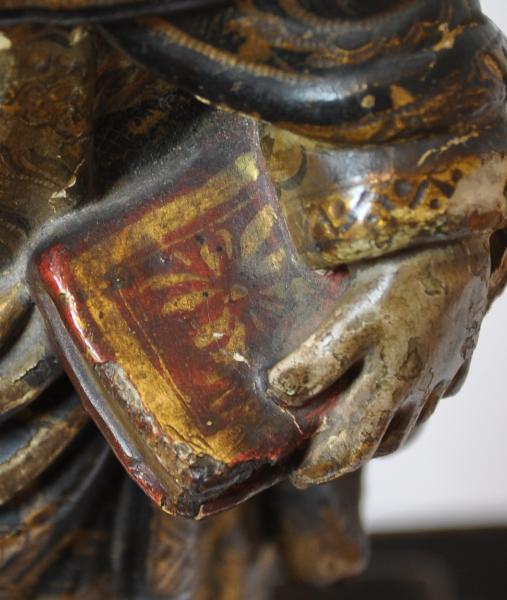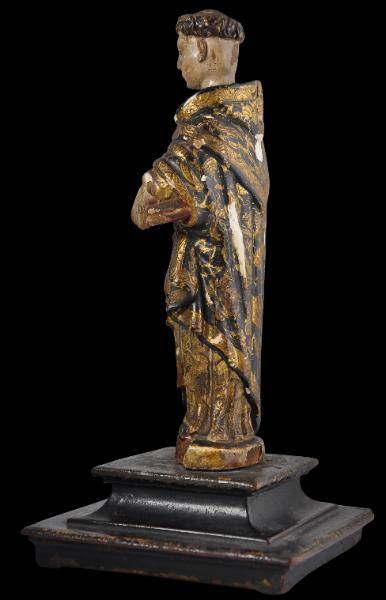
Spanish Colonial Image of St Anthony of Padua
Gilt & Polychrome Carved Wooden Image of Saint Anthony of Padua
Colonial Brazil
18th century
height: 22.5cm, or 27.5cm with stand
This figure of Saint Anthony of Padua is well carved in wood and is richly decorated with polychrome and gilt. The exuberant manner of the decoration suggests a likely Portuguese or Spanish colonial provenance, and most particularly a colonial Brazilian or perhaps a Guatemalan provenance. The carving, decoration and patina all point to an eighteenth century dating.
The figure has a tonsured head, wears the long and flowing robes of a Franciscan monk (albeit with ample Baroque embellishment), and holds a book in his left hand – not necessarily the Bible but possibly a copy of his sermons. A hole on the top of the head would have allowed the figure to wear a metal, possibly silver, halo.
The saint was born to a wealthy Lisbon family in 1195. He became a Portuguese Catholic priest and friar of the Franciscan Order, and died in Padua, Italy, in 1231.
He achieved much fame as a preacher and teacher and in 1226, after attending the General Chapter of his order held at Arles, France, he returned to Italy and served as envoy from the general chapter to Pope Gregory IX. At the Papal court, his preaching was hailed as a ‘jewel case of the Bible’ and he was asked to publish a collection of his sermons.
The ‘jewel case of the Bible’ is referenced in this statue – the Bible that the figure holds is emblazoned on the top and bottom covers with a jewel-like sunburst motif.
Saint Anthony is known in Portugal, Spain and Brazil as a marriage saint, because there are legends of him reconciling couples. He is one of the saints celebrated in the Brazilian Festa Junina where he is known as Santo Antônio.
It is the rich decoration of the figure’s robes, which ordinarily should be plain in accordance with the pious Franciscan aesthetic, that suggests the figure’s colonial origins. A carved wooden figure of Saint Anthony with a late eighteenth century Indo-Portuguese attribution with Hispano-Philippine influences in the Roberta an Richard Huber Collection also has gold detailing although less exuberant: ‘Both the habit and the collar are decorated with gold motifs, rich details that artists allowed themselves in Spanish and Portuguese colonial possessions but that are seldom seen in European work,’ (Stratton-Pruitt, 2013, p. 121).
The figure is in a fine stable condition. It is mounted on a blackened, wooden stand. The stand itself shows significant age. There are losses to the polychrome on the figure, particularly of the back. The front of the oval platform on which the figure stands has been chipped away, but this is old damage and preceded the figure being mounted on the stand.
References
Mourao, R., et al, O Museu da Inconfidencia – Sao Paulo, Banco Safra, 1995.
Ribeiro de Oliveira, M.,
et al, Les Portugais au Bresil: L’art dans le vie Quotidienne, Collection Pimenta Camargo, Fondation Europalia International, 1991.
Rishel, J.J. & S. Stratton-Pruitt,
The Arts in Latin America 1492-1820, Yale University Press, 2006.
Stratton-Pruitt, S.L.,
Journeys to New Worlds: Spanish and Portuguese Colonial Art in the Roberta and Richard Huber Collection, Philadelphia Museum of Art/Yale University Press, 2013.
Trusted, M.,
The Arts of Spain: Iberia and Latin America 1450-1700, V&A Publications, 2007.
Provenance
UK private collection
Inventory no.: 2220
SOLD

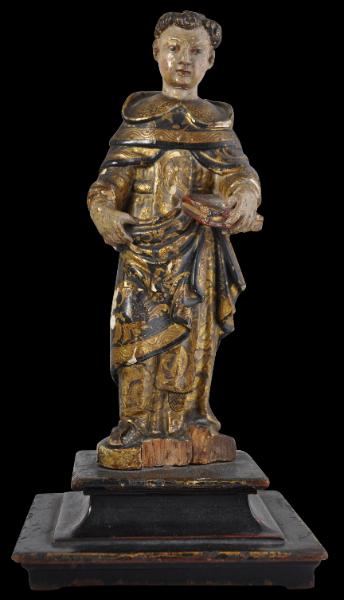
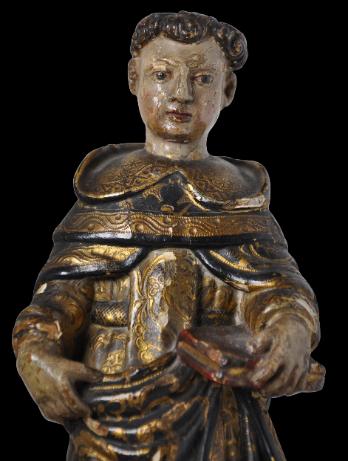
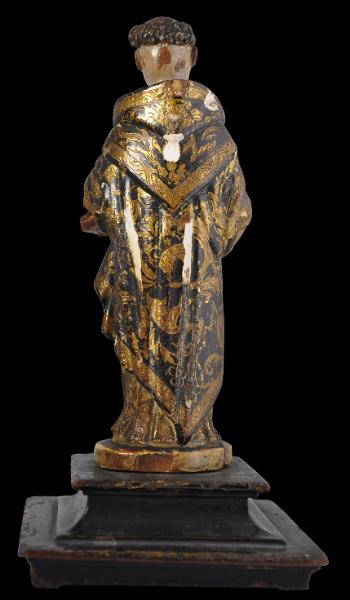
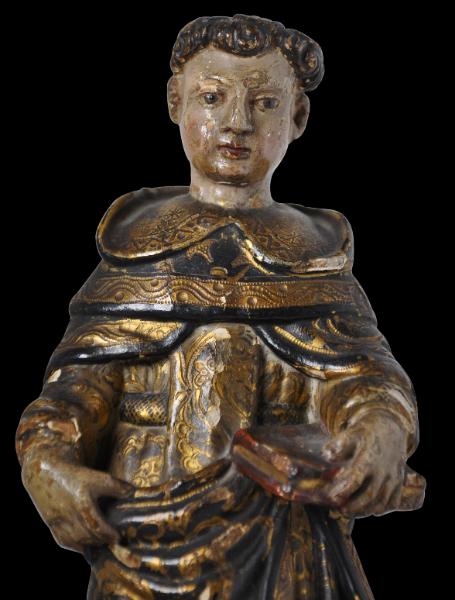
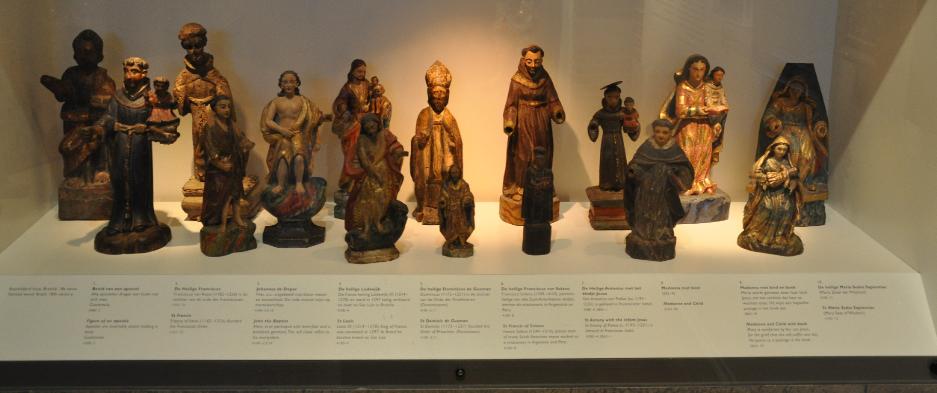
A display of carved wooden Christian saints and other figures from eighteenth century Brazil, photographed in Amsterdam’s Tropenmuseum.
